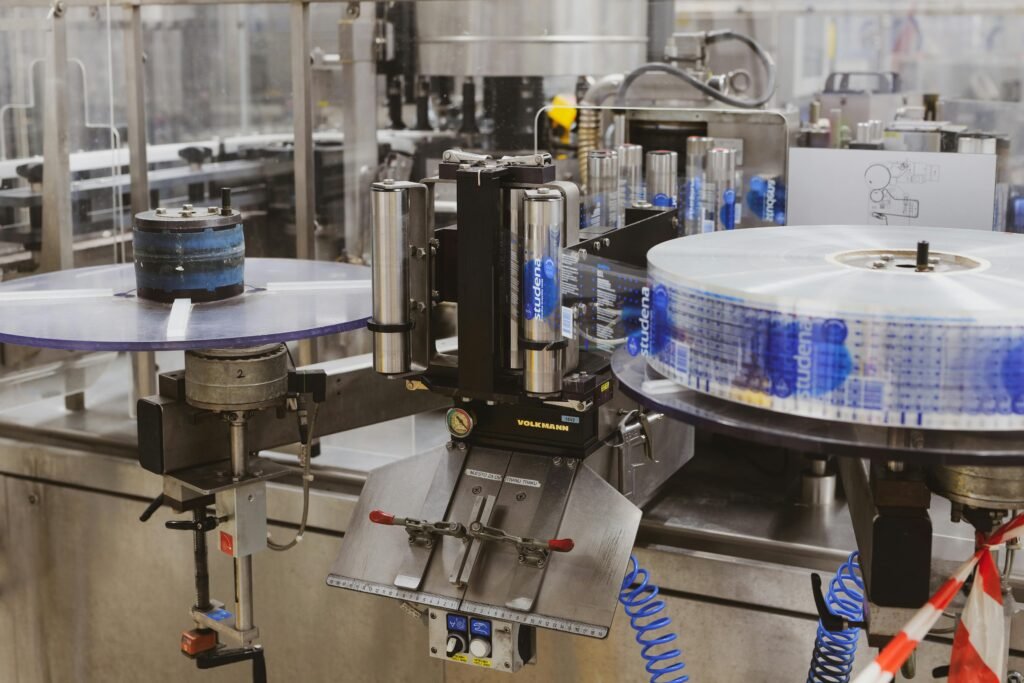Unraveling the Complex Mechanics of Bicycle Gears and Drivetrains
Have you ever wondered how a simple bicycle can provide such a wide range of speeds and allow you to conquer different terrains with ease? In this article, we will unravel the complex mechanics of bicycle gears and drivetrains to understand how they work together to deliver the smooth and efficient cycling experience we all enjoy. From the various components that make up the drivetrain to the science behind gear ratios and shifting, we’ll take a closer look at the fascinating world that lies within your bicycle’s gears. So, grab your helmet and get ready to explore the inner workings of this remarkable machine!

This image is property of images.pexels.com.
Overview of Bicycle Gears and Drivetrains
Definition of bicycle gears and drivetrains
Bicycle gears and drivetrains refer to the mechanical components that enable the transmission of power from the rider’s legs to the wheels. Gears are essential for efficiently navigating different terrains and varying speeds. Drivetrains, on the other hand, encompass all the parts that are involved in transferring power, including the chain, cassette/freewheel, derailleurs, crankset, shifters, and bottom bracket.
Importance of gears and drivetrains in bicycles
Gears and drivetrains play a pivotal role in enhancing the overall riding experience. They allow riders to exert their effort optimally depending on the terrain and the desired speed. By utilizing different gear combinations, cyclists can customize their pedaling resistance, making it easier to climb hills, maintain speed on flats, or pedal quickly on descents. Gears also distribute the workload across a variety of muscles, reducing fatigue and improving efficiency.
Components of Bicycle Gears and Drivetrains
Chain
The chain connects the front chainrings to the rear cassette/freewheel, transmitting the power from the pedals to the wheels. It is a crucial component that needs to be properly lubricated and maintained for optimal performance. Chains are available in various widths to match the number of gears on the drivetrain.
Cassette/Freewheel
The cassette, also known as the freewheel, is a set of multiple gears mounted on the rear wheel. It provides a range of gear ratios to suit different riding conditions. Cassettes can be easily swapped to customize the gear range based on the rider’s preferences.
Derailleurs
Derailleurs are responsible for moving the chain between different gears on the cassette or chainrings. There are two types of derailleurs – the front derailleur and the rear derailleur. The front derailleur guides the chain across the chainrings, while the rear derailleur controls the movement of the chain on the cassette.
Crankset
The crankset consists of the chainrings attached to the pedal cranks. It is responsible for converting the rider’s pedaling motion into rotational power. Cranksets come in various configurations, offering different gear ratios.
Shifters
Shifters allow riders to change gears by controlling the movement of derailleurs. They can either be integrated with the brake levers or mounted separately on the handlebars. Shifters are available in both mechanical and electronic versions.
Bottom Bracket
The bottom bracket connects the crankset to the bicycle frame. It houses the bearings that allow the crankset to rotate smoothly. Bottom brackets come in different types and sizes, depending on the frame and crankset specifications.
Types of Bicycle Gears and Drivetrains
Single Speed Gears
Single speed gears consist of a single chainring and a single rear cog. They offer simplicity and low maintenance, making them popular for urban commuting or BMX riding. While they lack gear range, single speed gears are known for their durability and ease of use.
Internal Gear Hubs
Internal gear hubs are an alternative to external derailleurs and cassettes. They consist of multiple gears enclosed within the rear hub. Internal gear hubs are known for their reliability, low maintenance, and the ability to shift gears while stationary. They are favored by urban commuters and riders who prioritize simplicity.
Derailleur Gears
Derailleur gears are the most common type of gears found on bicycles. They use a combination of front and rear derailleurs to move the chain across different gears on the cassette or chainrings. Derailleur gears offer a wide gear range and are widely used in various disciplines, ranging from road cycling to mountain biking.
How Bicycle Gears and Drivetrains Work
Gear Ratios and Range
Gear ratios determine the relationship between the front chainring and the rear cog. A higher gear ratio provides more power per pedal stroke, allowing riders to achieve higher speeds. Conversely, a lower gear ratio offers easier pedaling for climbing or navigating steep terrains. The gear range refers to the span of gear ratios available on a bike, from the easiest to the hardest gear. Having a wide gear range allows cyclists to tackle a variety of terrains efficiently.
Shifting Gears
Shifting gears involves moving the chain from one gear to another. Riders use the shifters to control the derailleurs, which accurately position the chain onto the desired gear. Timing and coordination are crucial when shifting gears, especially during high-intensity or uphill efforts where maintaining momentum is important.
Chain Movement and Tension
The chain moves along the cassette or chainrings when shifting gears. It is essential for the chain to move smoothly and efficiently to prevent excess noise, skipping, or slipping. Proper chain tension is crucial to ensure smooth shifting and efficient power transfer.
Derailleur Adjustment
Derailleur adjustment is necessary to maintain optimal shifting performance. Over time, cables stretch, and components wear, which can result in imprecise shifting. Adjusting the derailleurs ensures that the chain smoothly and accurately moves across the gears. It involves fine-tuning the limit screws and cable tension to achieve precise shifting.

This image is property of images.pexels.com.
Factors to Consider in Choosing Bicycle Gears and Drivetrains
Intended Use of the Bicycle
Understanding the intended use of the bicycle is crucial in choosing the appropriate gears and drivetrain. Road cyclists might prioritize a wide gear range and lightweight components, while mountain bikers may focus on durability and performance in off-road conditions. Commuters might opt for internal gear hubs for their reliability and low maintenance.
Terrain
The terrain you frequently ride on plays a significant role in gear selection. Hilly terrains may require lower gear ratios to tackle steep climbs, while flatter terrains could benefit from higher gear ratios to achieve higher speeds. It is essential to consider the types of gradients and surfaces you commonly encounter.
Rider’s Ability and Fitness Level
The rider’s abilities and fitness level should be considered when choosing gears and drivetrains. Novice riders or individuals with lower fitness levels may benefit from gears with lower ratios, allowing for easier pedaling. Experienced riders with higher fitness levels may prefer high gear ratios that provide more power and speed.
Maintenance Needs
Different types of gears and drivetrains have varying maintenance requirements. Single speed gears and internal gear hubs are generally low maintenance, while derailleur gears require more frequent adjustments and lubrication. Consider your willingness and ability to perform regular maintenance tasks when choosing a drivetrain.
Budget
Budget is an important consideration when selecting gears and drivetrains. Simple single speed and internal gear hub systems tend to be more affordable, while high-performance derailleur systems can be more expensive. It is essential to balance your budget with the desired features and performance.
Common Issues and Troubleshooting
Chain Skipping or Slipping
Chain skipping or slipping can occur when the chain fails to engage properly with the teeth of the cassette or chainrings. This issue is often caused by a worn-out chain or cassette/freewheel. Regular inspection and replacement of worn-out components can help prevent chain skipping or slipping.
Misaligned Derailleurs
Misaligned derailleurs can result in imprecise shifting and noisy gears. It can be caused by impacts or general wear and tear. Proper adjustment of the limit screws and cable tension can resolve misalignment issues.
Noisy Gears or Drivetrain
Noisy gears or drivetrain can be caused by inadequate lubrication or worn-out components. Regular cleaning and proper lubrication can help reduce noise. If the noise persists, inspecting and replacing worn-out parts may be necessary.
Excessive Wear
Excessive wear on the cassette, chainrings, or chain can lead to poor shifting performance. Regular inspection and replacing worn-out components, especially the chain, can prolong the lifespan of the drivetrain.
Inconsistent Shifting
Inconsistent shifting can be caused by a variety of factors, such as cable tension issues, worn-out components, or improper derailleur alignment. Adjusting the cable tension, replacing worn-out parts, or realigning the derailleurs can often resolve inconsistent shifting.

This image is property of images.pexels.com.
Maintenance and Care for Bicycle Gears and Drivetrains
Cleaning and Lubrication
Regular cleaning and lubrication are crucial for maintaining optimal performance and longevity of gears and drivetrains. Remove dirt, debris, and old lubricant using appropriate brushes and solvents. Apply fresh lubricant to the chain, derailleurs, and other moving parts regularly to ensure smooth operation.
Regular Inspection and Adjustment
Periodically inspecting the gears and drivetrain for signs of wear, misalignment, or damage is important. Check the chain for wear using a chain wear indicator. Perform routine adjustments, such as cable tension and derailleur alignment, to ensure precise shifting.
Replacing Worn-out Parts
Worn-out components, such as the chain, cassette, and chainrings, should be replaced when they reach their recommended lifespan or show signs of significant wear. Regularly replacing worn-out parts helps maintain optimal performance and prevents further damage to the drivetrain.
Upgrading Bicycle Gears and Drivetrains
Reasons for upgrading
There are several reasons why cyclists choose to upgrade their gears and drivetrains. Upgrading can offer a wider gear range, improve shifting performance, reduce weight, or enhance durability. Some riders may also upgrade to match their changing riding preferences or to stay up to date with the latest technology.
Compatibility considerations
When upgrading gears and drivetrains, compatibility with existing components is crucial. Ensure that the new components are compatible with the frame, brake system, and other drivetrain parts to ensure optimal performance. Consult a professional or refer to the manufacturer’s specifications for compatibility information.
Steps in upgrading
Upgrading gears and drivetrains involves several steps. Begin by identifying your desired gear range and selecting appropriate components. Remove the old drivetrain components, such as the chain, cassette, and derailleur. Install and adjust the new drivetrain components, ensuring proper alignment and tension. Finally, perform a test ride and make necessary adjustments to achieve optimal performance.
Tips for Efficient Use of Bicycle Gears and Drivetrains
Gear Selection for Different Terrains
Choose the appropriate gear ratios based on the terrain you are riding on. Use lower gears for climbing steep hills to maintain a comfortable pedaling cadence. Shift to higher gears on flats or downhills to maximize speed.
Cadence and Gear Ratio
Maintaining an optimal pedaling cadence while matching it with the appropriate gear ratio helps improve efficiency and reduce fatigue. Experiment with different cadences while finding the gear that allows for smooth and controlled pedaling.
Proper Shifting Technique
Practice proper shifting technique to ensure smooth and precise gear changes. Anticipate gear changes ahead of time, release pressure on the pedals, and make a smooth shift with light pressure on the shifters. Avoid shifting under heavy load, as it may cause excessive wear on the drivetrain.
Avoiding Gear Cross-Chaining
Cross-chaining occurs when the chain is placed at an extreme angle, stretching diagonally between the front and rear gears. This can cause premature wear on the chain and gears. Avoid cross-chaining by selecting a chainring and rear cog combination that creates a straight chain line.
Conclusion
Understanding the mechanics of bicycle gears and drivetrains is essential for every cyclist. The components of gears and drivetrains, the different types available, and how they work all contribute to the overall riding experience. By considering various factors and properly maintaining these components, cyclists can optimize their gear choices, troubleshoot common issues, and ensure a smoother and more enjoyable ride. Remember to choose the right gears and drivetrain for your needs, stay on top of maintenance, and follow best practices for efficient gear usage to make the most out of your cycling adventures.



